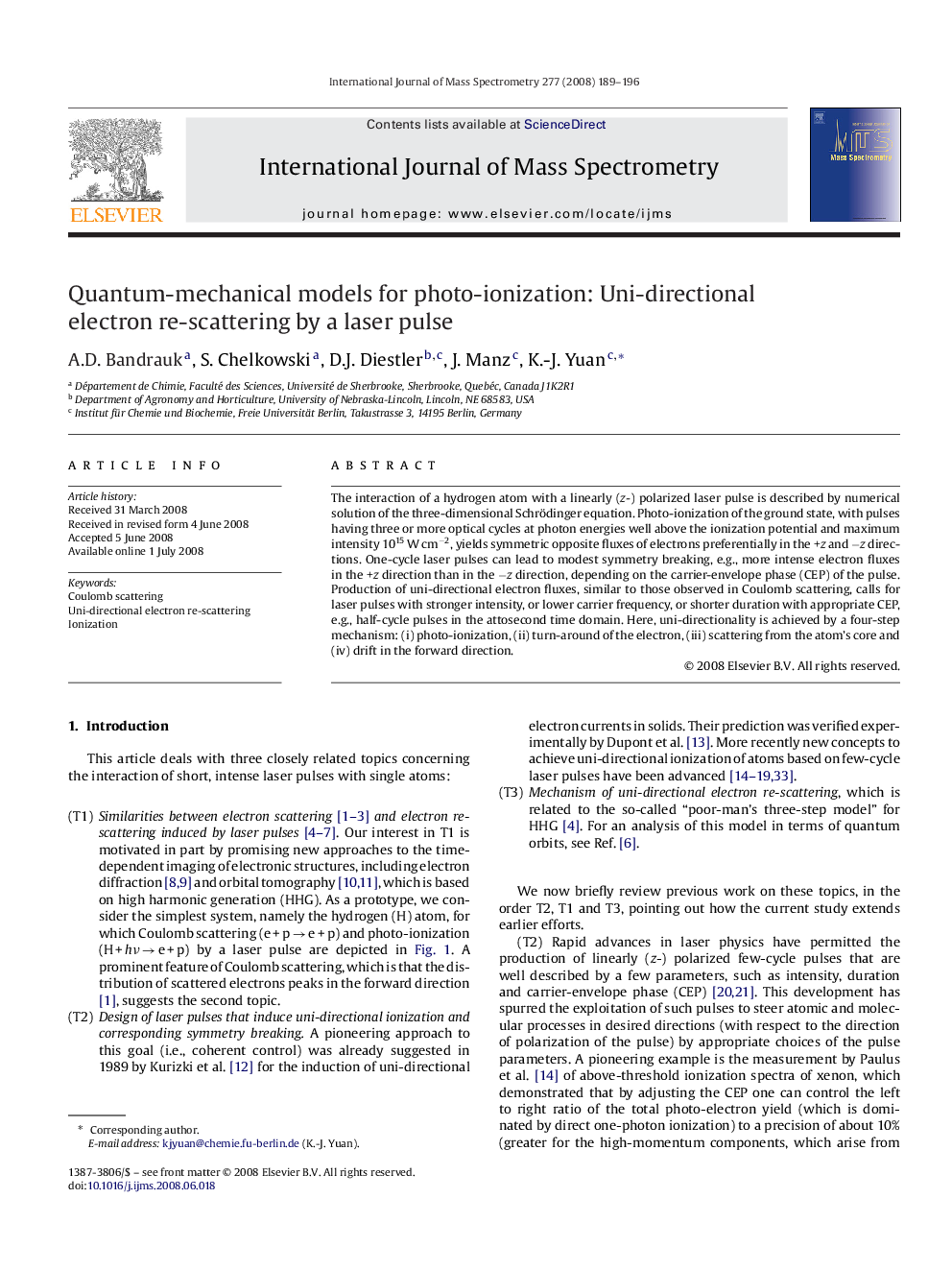| Article ID | Journal | Published Year | Pages | File Type |
|---|---|---|---|---|
| 1192458 | International Journal of Mass Spectrometry | 2008 | 8 Pages |
The interaction of a hydrogen atom with a linearly (z-) polarized laser pulse is described by numerical solution of the three-dimensional Schrödinger equation. Photo-ionization of the ground state, with pulses having three or more optical cycles at photon energies well above the ionization potential and maximum intensity 1015 W cm−2, yields symmetric opposite fluxes of electrons preferentially in the +z and −z directions. One-cycle laser pulses can lead to modest symmetry breaking, e.g., more intense electron fluxes in the +z direction than in the −z direction, depending on the carrier-envelope phase (CEP) of the pulse. Production of uni-directional electron fluxes, similar to those observed in Coulomb scattering, calls for laser pulses with stronger intensity, or lower carrier frequency, or shorter duration with appropriate CEP, e.g., half-cycle pulses in the attosecond time domain. Here, uni-directionality is achieved by a four-step mechanism: (i) photo-ionization, (ii) turn-around of the electron, (iii) scattering from the atom's core and (iv) drift in the forward direction.
